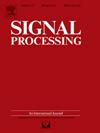Distributed filtering with time-varying topology: A temporal-difference learning approach in dual games
IF 3.4
2区 工程技术
Q2 ENGINEERING, ELECTRICAL & ELECTRONIC
引用次数: 0
Abstract
This study aims to develop a dual games (DGs) mechanism and implement a temporal difference learning (TDL) approach to address distributed filter design while considering network-induced time-varying topology from individual optimality and global equilibrium perspectives. In a detailed analysis, each filtering node (FN) treats its individual filtering action and exogenous disturbance as opposing elements, striving to determine the optimal policy while accounting for the worst-case scenario. This competition between FN and the disturbance culminates in a zero-sum game. Simultaneously, FN collaborates effectively with its neighbors to achieve consensus estimation, giving rise to a non-zero-sum game. Notably, an error-based filtering action is built to solve challenges posed by DGs. Ultimately, each FN attains its estimation at a minimum cost, and the entire distributed filtering network achieves the consensus estimation at a Nash equilibrium. Moreover, the transition probability correlation matrices (TPCMs) of the time-varying topology are obtained through direct observation of multi-episodes of topological transition trajectories. It has been proved that with a sufficiently ample number of episodes, TPCMs converge to their optimal values when TPs are known as apriori. Finally, a numerical example and an aero-engine system are presented to illustrate the effectiveness and practical potential of the proposed method.
具有时变拓扑结构的分布式过滤:双重博弈中的时差学习方法
本研究旨在开发一种二元博弈(DGs)机制,并实施一种时差学习(TDL)方法,以解决分布式滤波器设计问题,同时从个体最优和全局均衡的角度考虑网络引起的时变拓扑。在详细分析中,每个过滤节点(FN)都将其各自的过滤行动和外生干扰视为对立元素,在考虑最坏情况的同时努力确定最优策略。FN 与干扰之间的竞争最终导致零和博弈。与此同时,FN 与其邻居进行有效合作,以达成一致的估计,这就产生了非零和博弈。值得注意的是,一种基于误差的过滤行动被建立起来,以解决 DG 带来的挑战。最终,每个 FN 都以最小的成本实现了自己的估计,整个分布式过滤网络在纳什均衡状态下实现了共识估计。此外,时变拓扑的过渡概率相关矩阵(TPCM)是通过直接观察拓扑过渡轨迹的多事件获得的。研究证明,只要有足够多的事件集,当预先知道 TPs 时,TPCMs 就会收敛到最佳值。最后,介绍了一个数值示例和一个航空发动机系统,以说明所提方法的有效性和实用潜力。
本文章由计算机程序翻译,如有差异,请以英文原文为准。
求助全文
约1分钟内获得全文
求助全文
来源期刊

Signal Processing
工程技术-工程:电子与电气
CiteScore
9.20
自引率
9.10%
发文量
309
审稿时长
41 days
期刊介绍:
Signal Processing incorporates all aspects of the theory and practice of signal processing. It features original research work, tutorial and review articles, and accounts of practical developments. It is intended for a rapid dissemination of knowledge and experience to engineers and scientists working in the research, development or practical application of signal processing.
Subject areas covered by the journal include: Signal Theory; Stochastic Processes; Detection and Estimation; Spectral Analysis; Filtering; Signal Processing Systems; Software Developments; Image Processing; Pattern Recognition; Optical Signal Processing; Digital Signal Processing; Multi-dimensional Signal Processing; Communication Signal Processing; Biomedical Signal Processing; Geophysical and Astrophysical Signal Processing; Earth Resources Signal Processing; Acoustic and Vibration Signal Processing; Data Processing; Remote Sensing; Signal Processing Technology; Radar Signal Processing; Sonar Signal Processing; Industrial Applications; New Applications.
 求助内容:
求助内容: 应助结果提醒方式:
应助结果提醒方式:


